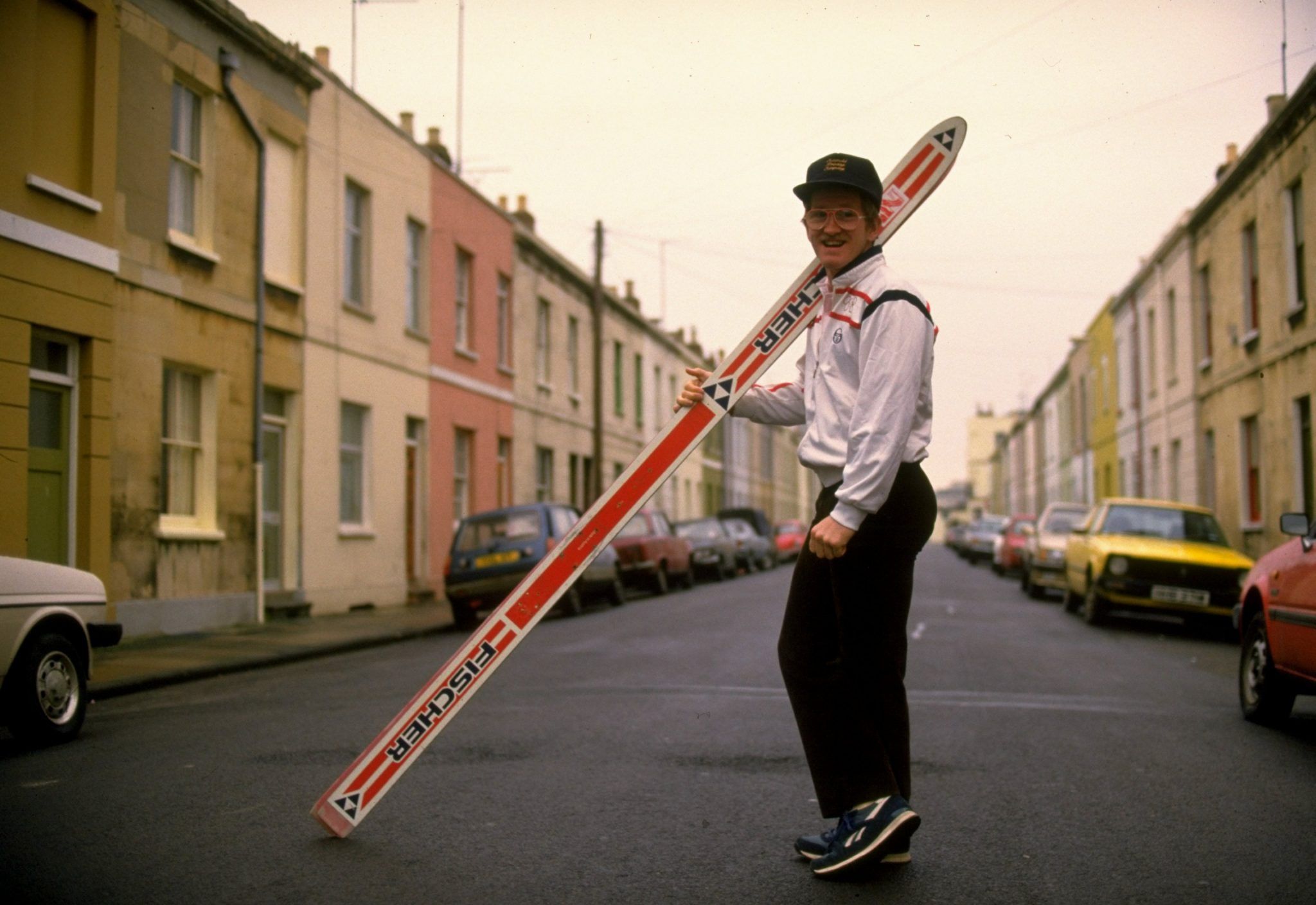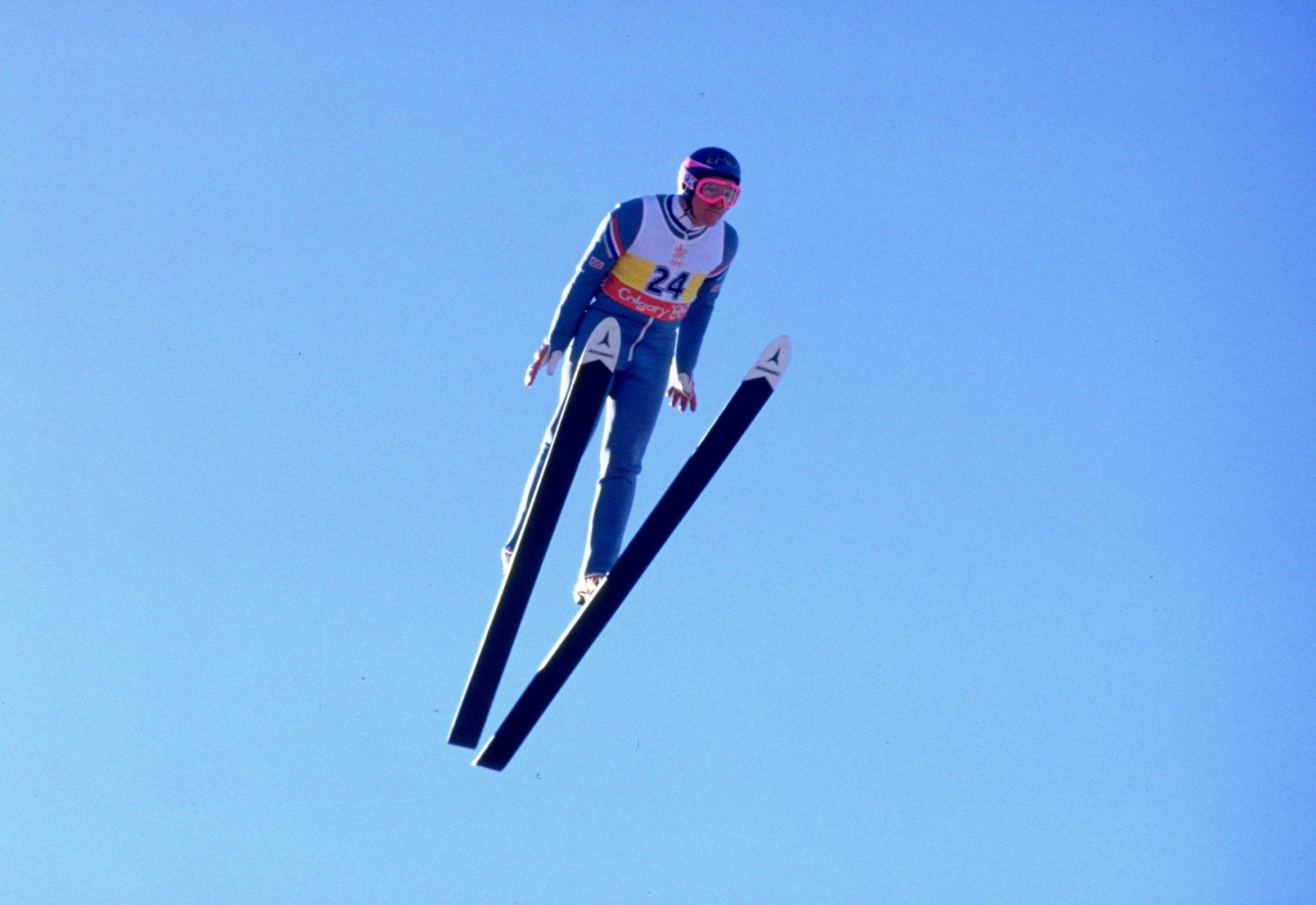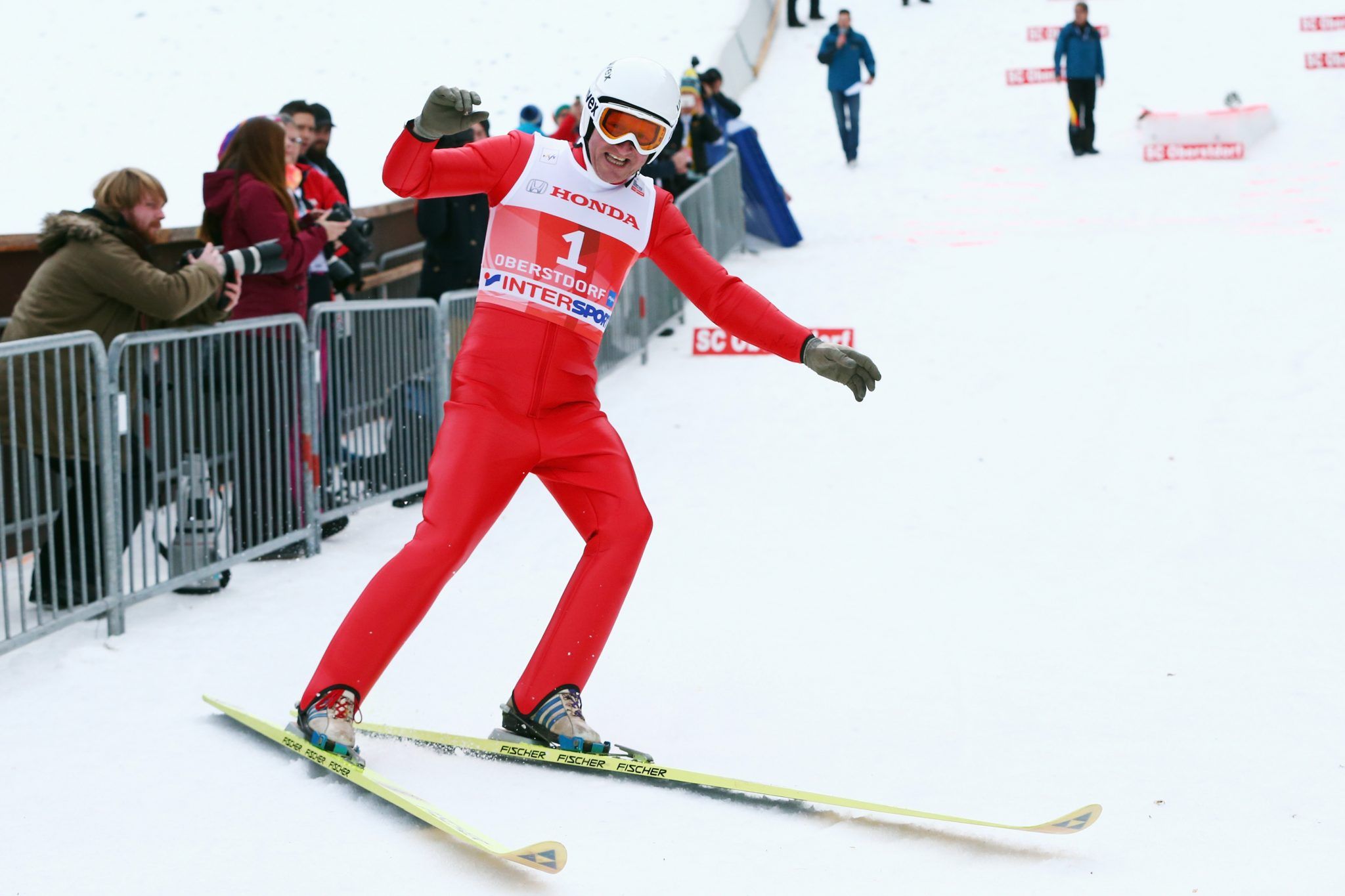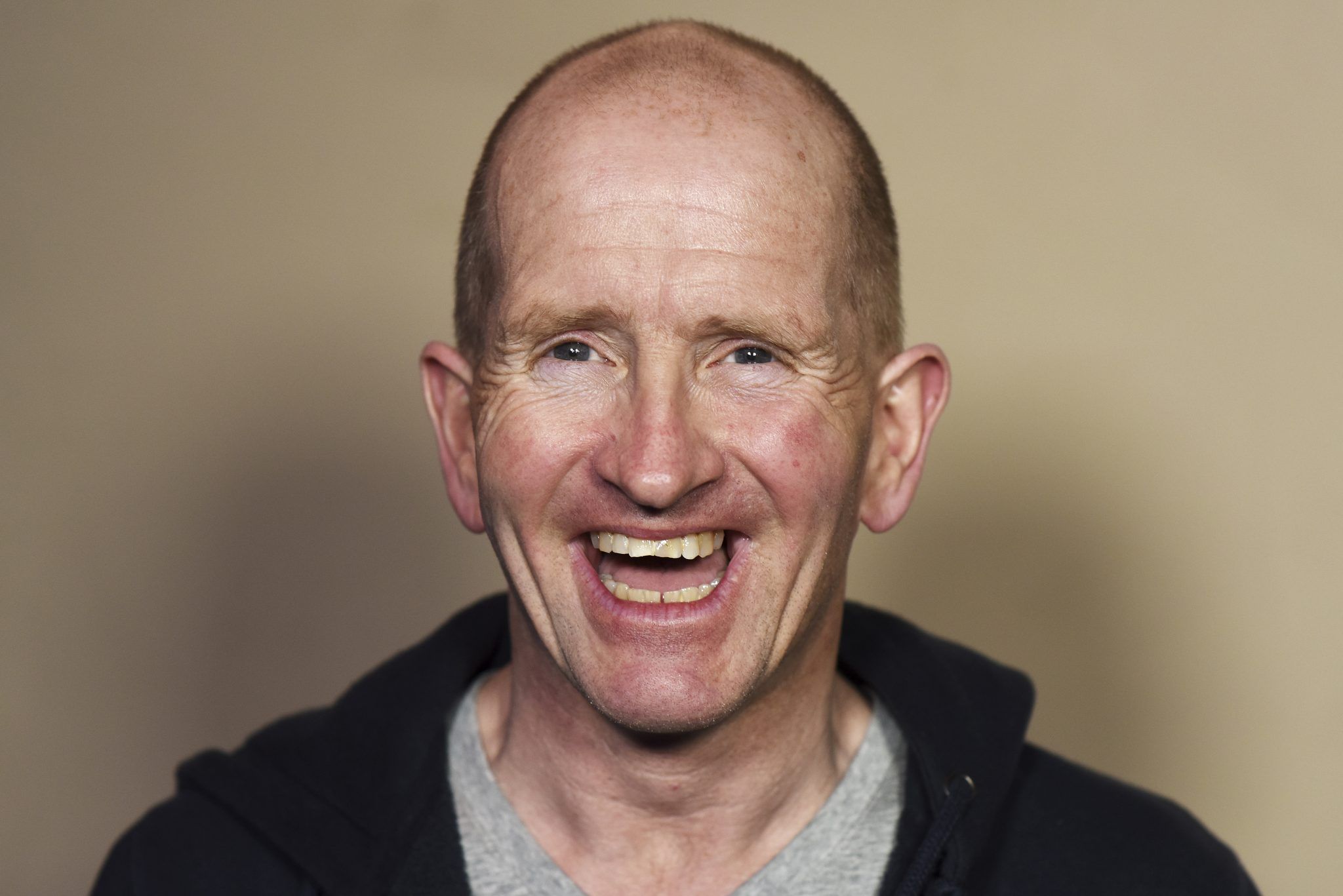From plasterer to plastered across every newspaper
With 90,000 people screaming his name, Michael David Edwards gazed down the blistering white slopes of Calgary, Canada. The odds were stacked against him, his competitors wielding years of sponsored training – and yet – he was on the inrun with the best of them. Clad in neon pink goggles wedged atop his eccentric glasses, he smiled at the camera and then lift off.
However, this story is not one of victory, at least not in the typical sense. While Edwards would not leave Calgary with a medal, he would come to be known by another name entirely – Eddie the Eagle.

Born to Janette and plasterer Terry in 1963, Edwards was nicknamed “Eddie” by school friends in Cheltenham, Gloucestershire.
He was always a determined kid but his “mum would call it stubbornness”, he told the Guardian in 2017. “I was like that from when I was a little boy, and if somebody dared me to do something, then I’d do it.”
While Dexter Fletcher’s 2016 biopic starring Taron Egerton and Hugh Jackman painted Eddie as almost unathletic, this couldn’t be further from the truth. Whether it was cricket or rugby, volleyball or football, Eddie was actually “quite a good athlete.”
A cartilage injury at the age of 12 left Eddie with a plastered leg and two years’ worth of hospital visits. Throughout his recovery, he watched the Olympics and soon a boyish interest developed into a man’s life-long ambition.
His adoration of skiing was birthed after a school trip but soon he would be skiing most days in the nearby city of Gloucester.
Years of dedicated practise only added fuel to Eddie’s burning desire to break ground in athletics. He initially sought to compete in 1984’s Sarajevo Olympics as an Alpine skier but failed to qualify. While most of us may have called it a day, Eddie changed course and set his sights on perfecting the art of ski jumping.
However, this was no easy task.
Under the supervision of the late John Viscome and trainers Jay Rand, and Chuck Berghorn – the latter of which never called him “eagle” as he was more like an “albatross” – Eddie began his training.
“When Eddie came to sign the waiver forms in my office, I couldn’t quite believe what I was seeing,” Berghorn told the Daily Mail, recalling Eddie arriving at Lake Placid, New York. “He was old, never jumped before, was wearing the thickest glasses I had ever seen and was chunky.”
There was no glorious training montage set to “Eye of the Tiger” or even Hall and Oats’ You Make My Dreams, as featured in Fletcher’s movie. Instead, “the Eagle” was subjected to financial burdens, a lack of support from the wider sporting community and later a lack of accommodation in Finland that led to his stay in a mental hospital.
He later told the Independent: “Luckily one of the trainers was a painter-decorator, and he happened to be working at a mental hospital. So he asked if I could stay there, which I did for about a month.
“I didn’t find out until later that the place was Finland’s equivalent of Broadmoor.”

Grossing $46.2 million at the box office, Fletcher’s 2016 film depicted a bumbling, goofy, almost caricature-like version of Eddie that seemingly aligned with how he was regarded by the British Olympic Association (BOA) at the time. He was disregarded by the very body designed to uplift Olympic athletes despite the overwhelming support of the British public.
Eddie told the Sunday Post that BOA was “embarrassed” by him and even believed he was making “a mockery of the sport.”
He added: “But that’s not how the other competitors and everyday people saw it. They saw that I was exemplifying the Olympic spirit.”
Eddie later finished last at the 1987 World Championships but met the Olympic standard after a jump of almost 70 metres- much to BOA’s displeasure.
At 26, Eddie journeyed to the Olympics as Britain’s first Olympic ski jumper and upon entering Calgary, was given his wings. Banners reading “Welcome to Calgary, Eddie The Eagle” signalled the climax of his Cinderella story.
After hustling in the dark to gather funds and train, Calgary had shoved Eddie straight into the spotlight. International media adored him, the British public adored him and the British Olympic Association would soon regret dismissing him.
Eddie’s naturally charismatic charm had the press spellbound and they no longer cared as much about covering other British athletes. Eddie explained in 2017 that Drambuie, who sponsored team GB but not him, became infuriated their product saw minimal airtime due to the press’ obsession with Eddie.

He explained: “I was getting all this publicity but I wasn’t under that Drambuie umbrella, so Drambuie went apeshit at the BOA, and the BOA didn’t know what to do.
“They put an embargo on the press talking to me, and that just poured fuel on the fire. So the media tried to get at me in any way, shape or form to get a story off me.”
After the event, Eddie returned to a very different UK. He had left relatively untouched by the limelight, only to return bathed in it – and everyone wanted a piece. While the rest of the British squad sank into obscurity, Eddie was bagging thousands opening everything from shopping centres, to rides at Alton Towers.
However, it sadly didn’t last long. In 1992, Eddie declared bankruptcy. He went back to school to get his GCSE’s, studied to become a lawyer and eventually returned to the world of plastering.
Still, despite the nation’s love of the athlete, BOA and other sporting bodies clipped his wings and even designed a rule nicknamed after him that prevented other athletes from breaking into the Olympics in a similar fashion.
In some ways, he’s the Batman of the sporting world, only Bat’s cape and cowl are replaced with chunky glasses and a can-do attitude.
“The important thing in the Olympic Games is not to win, but to take part,” said the father of the modern Olympics, Pierre de Coubertin. “The important thing in life is not triumph, but the struggle; the essential thing is not to have conquered but to have fought well.”
Who does this describe if not Eddie? His placement at Calgary was never important because – as Eddie himself puts it -“just getting [to the Olympics] was my gold medal.”
While everyone loves a rags to riches story, Eddie’s tale was always more than that. It was never about fame or money but instead one man’s drive to take up space in an industry set against him.
Related Links:
- China brings back anal covid testing ahead of Winter Olympics
- What Cool Runnings got wrong about the Jamaican bobsleigh team
- Jamaican four-man bobsled team qualifies for 2022 Winter Olympics



































